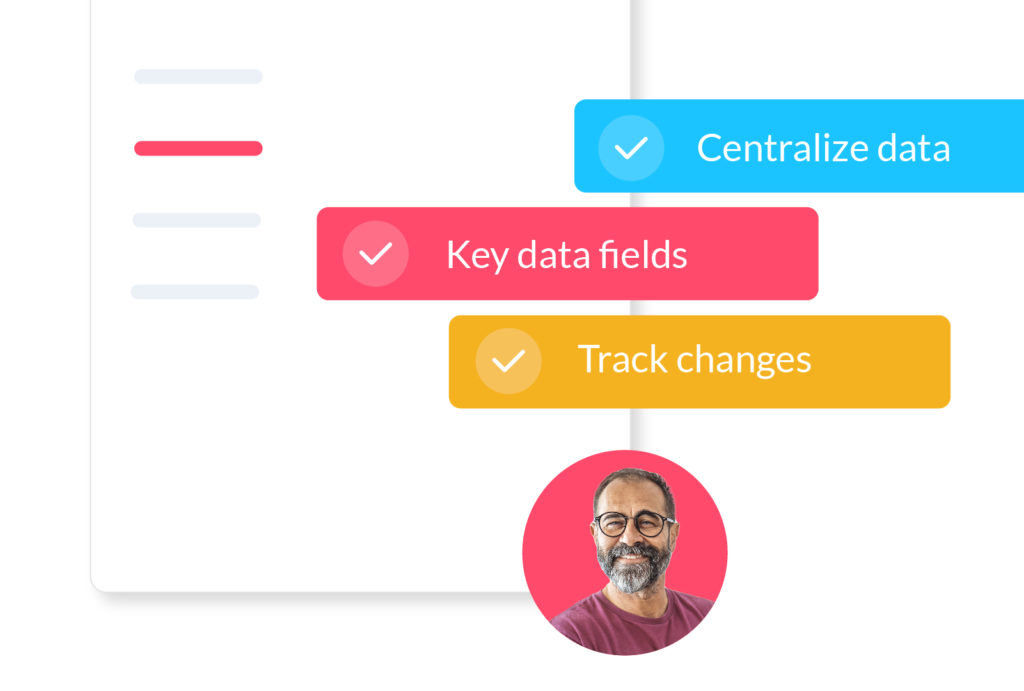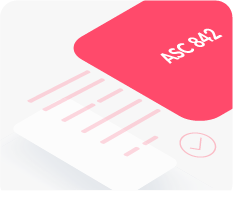
Get lease accounting data right the first time
By
EZLease team
Collecting your lease data without knowing what fields you’ll need to manage can be a recipe for rework and errors. It can be time-consuming to gather leases and abstract the lease accounting data, so we’re going to make it a little easier. We’re going to break down the steps to take, from centralizing your data to the key data fields you’ll need to collect with a look at abstraction best practices.
Begin by centralizing your lease data
As you’re starting to collect all your lease data, you need to have a goal in mind. Your leases are probably stored across your entire organization. Centralizing all that lease information within different departments, or even different countries, into one organized space is your first step. No matter where the data is stored today (random spreadsheets, filing cabinets, etc.), you need to keep your lease files organized, and capture the entirety of your portfolio.
Why do you need to abstract lease data?
There are a few reasons why you might want to abstract your lease data:
- To make it easier to manage multiple leases across different properties
- To keep track of changes in lease terms over time
- To compare different leases side-by-side
- To ensure that you are compliant with current lease accounting standards
What is pre-abstraction in lease accounting?
Pre-abstraction helps you set up processes to keep track of all your lease agreements. What are the types of leases you have, and where are they located? What is the quality of the documents? How is the portfolio managed, and by whom? Do you need to change the controls and processes around leases going forward? Who will own the process? Thinking through these dimensions will help you achieve your long-term lease accounting compliance goals.
What is post-abstraction in lease accounting?
Post-abstraction is an evaluation step where you assess the ongoing maintenance of your lease portfolio. How often will it change? Who will manage those changes? Think through how to manage lease data in the future, now that you know where it lives and who manages it. This information can help you to figure out which technology you’ll need as well.
Once you have considered these two phases, you’re ready to start abstracting data from your lease information.
Key data fields
When you’re thinking about abstractions, you need to plan for the fields you’ll extract from each lease. You’ll start with the financial fields: lease start date, rent amount, the term of the lease in any renewal period to make sure they’re accurate, comprehensive, and complete. Then, you’ll consider any operational fields that may impact the ongoing management of a lease. Think about how you’ll use that data down the road as well. Here are the fields that most organizations start out collecting:
- Lease number or name
- Term start date
- Termination/end date
- Incremental Borrowing Rate (IBR)
- Economic life
- Fair value (or not determined)
- Base rent payment
- Step payments with due dates
- Payment frequency
- Repayment mode
- Renewal options
- Other end-of-term events
- Initial direct costs and/or lease incentives
- Guaranteed residual value
- Asset in service date
- Special depreciation
- Asset adjustments
- Deferred rent rollover
- Salvage value
- Lessor information
- Lease notifications
Additional elements to consider:
- Usage-based payments
- Index-based payments
- Performance-based payments
- Common Area Maintenance charges (used in real estate leases)
- Initial direct costs (IDCs)
Knowing what sort of operational considerations are included in the actual contracts, like future payments, guaranteed residuals, and variable payments is another helpful approach.
The more organized and easy-to-read your data is, the more likely it is that your output will become the new source of truth for your stakeholders. This will make ongoing compliance easier. This Key Data Fields eBook covers each field in more detail.
Following lease abstraction best practices
Putting best practices into play is the easiest way to meet your goals. When you’re extracting the data—the right data—it can also help you improve your business. As you collect your leases, planning up front for the data you’ll need will reduce or even eliminate rework. Your preparation and planning will be the most important aspects when abstracting out your data. This can be done by hand, with the help of AI, or using a hybrid of the two. Most organizations work with an abstraction vendor who has deep skills and resources in making the abstraction process and output more accurate.
Achieving ongoing completeness and accuracy
Having an organized database isn’t just a one-time thing. It must be an ongoing process where you’ll want to maintain the quality and integrity of the data collected.
Additionally, it’s important to ensure that all your data is secure, not just externally, but also internally. You don’t want the wrong person getting their hands on delicate information, and data breaches often happen from within an organization.
You can give access to data based on your employees’ role, which mitigates breaches by allowing them to only see the information that is relevant to their position.
Consider lease accounting software
Most accounting firms recommend using a lease accounting solution to manage lease data, especially if you’re managing more than 10 leases. When you use a seamless solution like EZLease, all your reports, data validation, lease classifications, and lease remeasurements are automated. With systematic controls, you’ll be able to keep data errors to a minimum. You can export data into your ERP to help with the heavy lifting around amortizing the ROU asset, lease liability balances and recording proper expenses.
In other words, the right lease accounting software simplifies the overall process.
The bottom line
Keeping track of lease data is a must for organizations with multiple leases. It’s important to centralize where your lease information is stored, while establishing controls and processes that help you achieve long-term compliance. See for yourself how EZLease can help you by signing up for our free trial.



